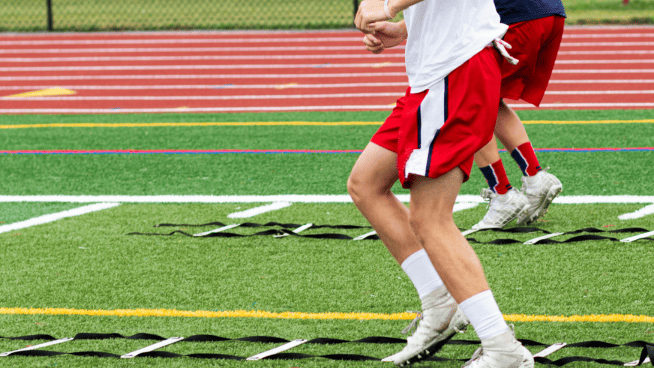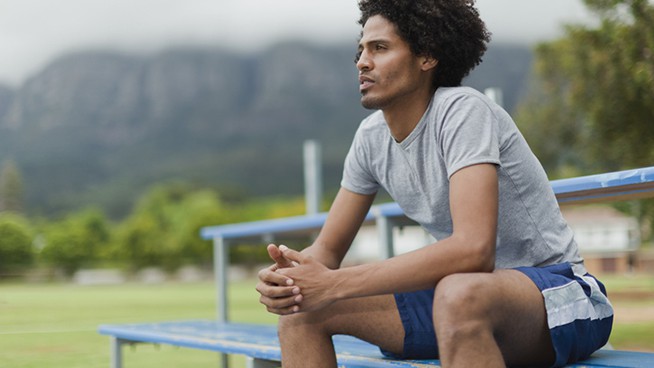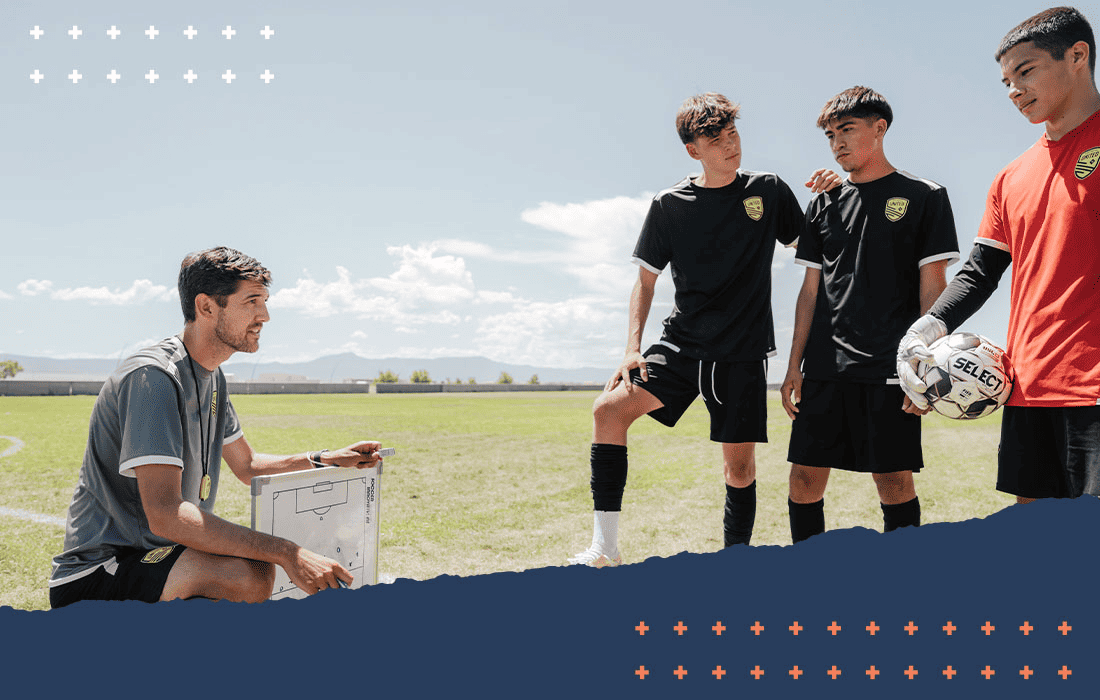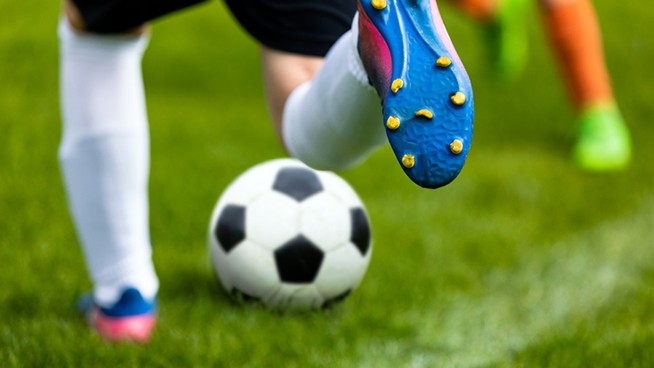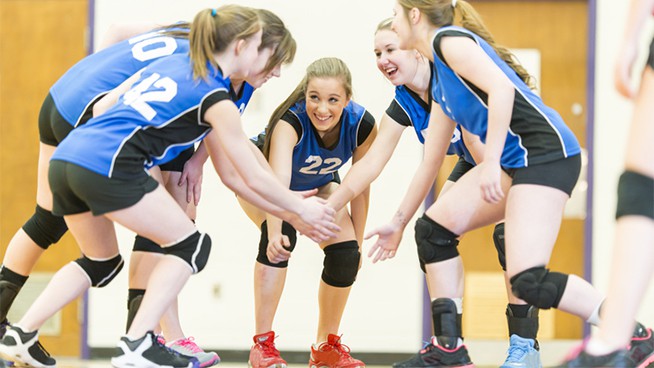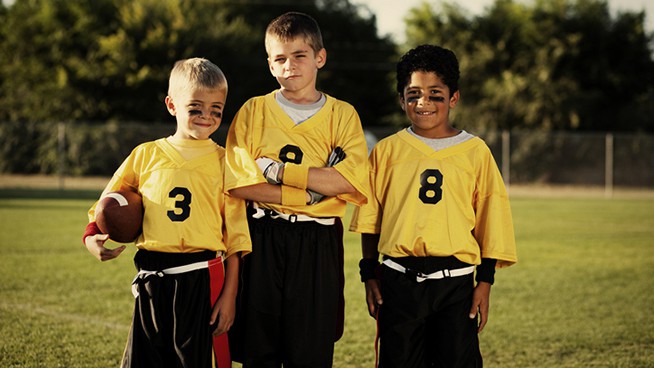How core training can reduce the chance of sustaining an ACL injury.
The rupture of an athlete’s Anterior Cruciate Ligament (ACL) is painful and distressing. It requires surgery to repair and then a lengthy rehabilitation process before the athlete can return to their sport.
Anything that can be done to reduce the chance of this injury occurring should be incorporated into an athlete’s training program, especially for female athletes. Female high school soccer players are three times more likely than their male counterparts to suffer an ACL injury.
Advice on the prevention of ACL injuries varies; it includes:
- · Nothing (!): Carrying on as normal and blaming injuries on ‘bad luck.’
- · Warming up before practice and matches that include: light jogging and stretches for the hips, knees, and ankles. This is a bit vague and lacks evidence to support it as a method for reducing the risk of ACL injuries.
- · A multi-dimensional movement and strength warm-up: including leg exercises such as lunges, knee dips as well as change of direction exercises. This requires thought and planning and teaching of the exercises: when done well, it works.
Whilst coaches and trainers rightly focus on knee strength and control in their multi-dimensional warm-up, core training can also help reduce the chance of suffering from this injury.
How does core control help knee control?
One of the risk factors for ACL injuries is poor knee control. When an athlete bends their knee and drops inwards towards the other knee, it is known as knee valgus. The higher the knee valgus (measured as an angle) the higher the risk of injury. When athletes land on one leg or change direction by planting and cutting that leg, if the knee lacks control, excess valgus occurs, and injury is more likely.
You can see this yourself by standing on one leg in front of a mirror and slowly bending the supporting leg. Does your knee move forward as you dip, or does it turn or sag inwards?
Improving the core strength and endurance of an athlete helps them control their hips, especially internal hip rotation. Again, stand on one leg and slowly turn the hip inwards. Do you notice your knee turn in too?
When moving fast and changing direction fast, the muscles need to anticipate and work together to prepare and conduct the movement. If the muscles are too slow to act, they can not control the hip or knee, and injuries are more likely.
In order to prepare for the game, common movements such as side stepping must be practiced with good form and at speed. The core training will supplement the game skill. Some of the core movements should also be done fast because that is the speed they need to move at in the game.
Some useful exercises
Here are some exercises that I use with athletes to help reduce the chances of them hurting their ACLs in non-contact situations. They progress from simple, foundation exercises to loaded exercises to specific and technical activities.
1. Prone series. This series of exercises require some upper body strength and mobility. You can do them separately to start, then put them together. The arm and leg movements make bracing and control harder than if you stayed in a static position
2. Medicine Ball walks. You can use any weighted object instead of a medicine ball. The core muscles don’t just run up and down the trunk; they cross it diagonally. This sequence challenges the coordination of the athlete. It can be done in a field setting with a soccer ball or football.
3. Dynamic core training. Using a soccer player as an example, this sequence and progression of exercises use both drills on the field and in the gym. They are fast, dynamic, and mostly done upright (like you play in the game). They require practice, but they are fun to do, and soccer players see the benefit immediately.
RECOMMENDED FOR YOU
How core training can reduce the chance of sustaining an ACL injury.
The rupture of an athlete’s Anterior Cruciate Ligament (ACL) is painful and distressing. It requires surgery to repair and then a lengthy rehabilitation process before the athlete can return to their sport.
Anything that can be done to reduce the chance of this injury occurring should be incorporated into an athlete’s training program, especially for female athletes. Female high school soccer players are three times more likely than their male counterparts to suffer an ACL injury.
Advice on the prevention of ACL injuries varies; it includes:
- · Nothing (!): Carrying on as normal and blaming injuries on ‘bad luck.’
- · Warming up before practice and matches that include: light jogging and stretches for the hips, knees, and ankles. This is a bit vague and lacks evidence to support it as a method for reducing the risk of ACL injuries.
- · A multi-dimensional movement and strength warm-up: including leg exercises such as lunges, knee dips as well as change of direction exercises. This requires thought and planning and teaching of the exercises: when done well, it works.
Whilst coaches and trainers rightly focus on knee strength and control in their multi-dimensional warm-up, core training can also help reduce the chance of suffering from this injury.
How does core control help knee control?
One of the risk factors for ACL injuries is poor knee control. When an athlete bends their knee and drops inwards towards the other knee, it is known as knee valgus. The higher the knee valgus (measured as an angle) the higher the risk of injury. When athletes land on one leg or change direction by planting and cutting that leg, if the knee lacks control, excess valgus occurs, and injury is more likely.
You can see this yourself by standing on one leg in front of a mirror and slowly bending the supporting leg. Does your knee move forward as you dip, or does it turn or sag inwards?
Improving the core strength and endurance of an athlete helps them control their hips, especially internal hip rotation. Again, stand on one leg and slowly turn the hip inwards. Do you notice your knee turn in too?
When moving fast and changing direction fast, the muscles need to anticipate and work together to prepare and conduct the movement. If the muscles are too slow to act, they can not control the hip or knee, and injuries are more likely.
In order to prepare for the game, common movements such as side stepping must be practiced with good form and at speed. The core training will supplement the game skill. Some of the core movements should also be done fast because that is the speed they need to move at in the game.
Some useful exercises
Here are some exercises that I use with athletes to help reduce the chances of them hurting their ACLs in non-contact situations. They progress from simple, foundation exercises to loaded exercises to specific and technical activities.
1. Prone series. This series of exercises require some upper body strength and mobility. You can do them separately to start, then put them together. The arm and leg movements make bracing and control harder than if you stayed in a static position
2. Medicine Ball walks. You can use any weighted object instead of a medicine ball. The core muscles don’t just run up and down the trunk; they cross it diagonally. This sequence challenges the coordination of the athlete. It can be done in a field setting with a soccer ball or football.
3. Dynamic core training. Using a soccer player as an example, this sequence and progression of exercises use both drills on the field and in the gym. They are fast, dynamic, and mostly done upright (like you play in the game). They require practice, but they are fun to do, and soccer players see the benefit immediately.





